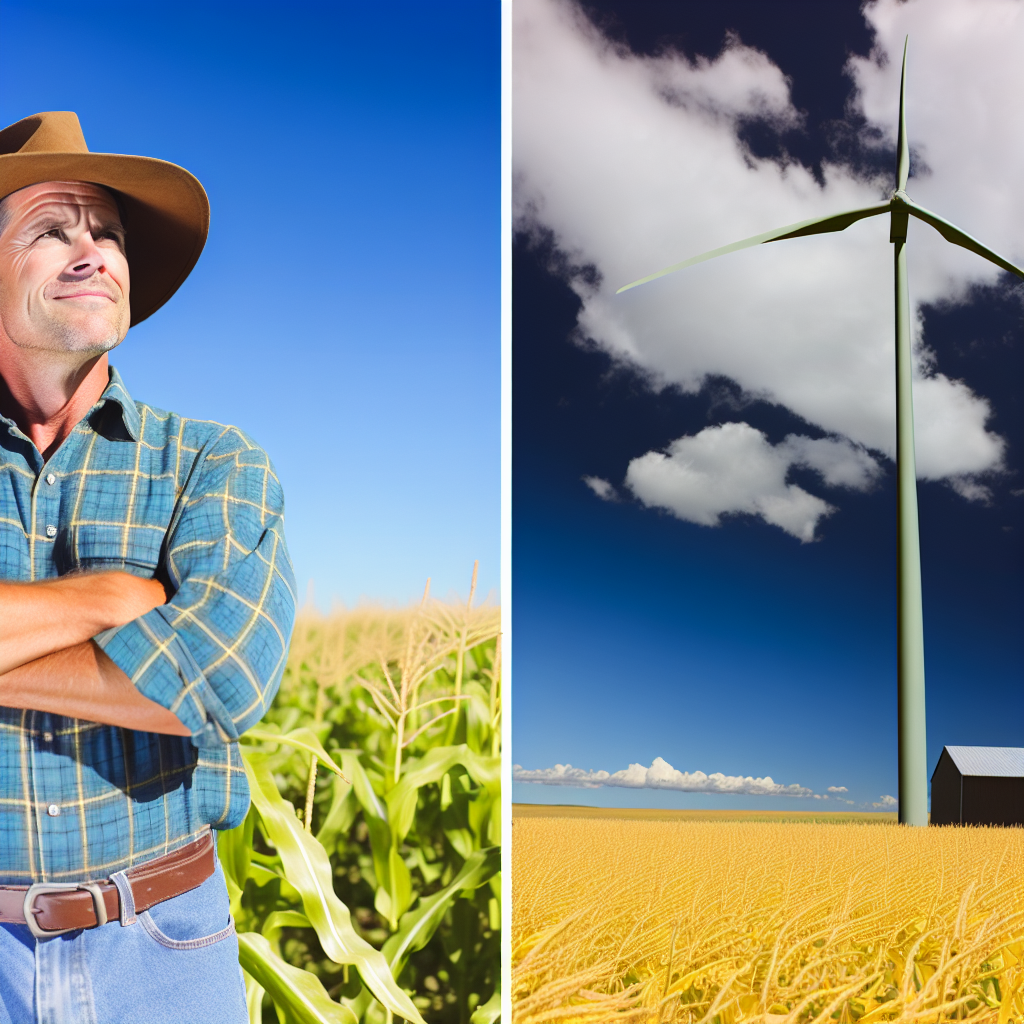Introduction to Biomass Digesters and Their Importance in Renewable Energy
Understanding Biomass Digesters
Biomass digesters are innovative systems for energy production.
They break down organic material through anaerobic digestion.
This process generates biogas, a renewable energy source.
Farmers can utilize various biomass sources, including manure and crop residue.
Consequently, biomass digesters contribute significantly to sustainable farming practices.
The Role of Biomass Digesters in Renewable Energy
Biomass digesters play a pivotal role in the renewable energy landscape.
They help reduce greenhouse gas emissions significantly.
In addition, they produce clean energy that can power farms.
Utilizing digesters allows farms to achieve energy independence.
Thus, they encourage local energy production, promoting rural economies.
Benefits of Using Biomass Digesters
- They reduce waste disposal costs for farmers.
- Digesters generate a valuable byproduct: digestate.
- Digestate enriches soil health and fertility.
- Farmers can sell excess energy back to the grid.
- Moreover, they create new job opportunities in the region.
Challenges and Considerations
Despite their advantages, biomass digesters have challenges to address.
Initial setup costs can be high for many farmers.
Additionally, ongoing maintenance requires technical expertise.
Farmers may face regulatory hurdles when installing digesters.
Nevertheless, financial incentives are available to mitigate these issues.
Transform Your Agribusiness
Unlock your farm's potential with expert advice tailored to your needs. Get actionable steps that drive real results.
Get StartedThe Future of Biomass Digesters
As technology advances, biomass digesters will improve in efficiency.
New innovations may reduce costs and simplify operations.
Furthermore, awareness campaigns will educate farmers on their benefits.
Ultimately, biomass digesters can become a cornerstone of renewable energy.
This shift aligns with the global push towards sustainable agriculture.
How Biomass Digesters Work: The Science Behind Anaerobic Digestion
Understanding Anaerobic Digestion
Anaerobic digestion is a natural process that breaks down organic matter.
This process occurs in the absence of oxygen, using microorganisms.
These microorganisms consume organic materials, producing biogas and digestate.
Biogas primarily consists of methane and carbon dioxide.
Digestate is a nutrient-rich material that can be used as fertilizer.
The Role of Microorganisms
Microorganisms play a crucial role in the anaerobic digestion process.
They convert organic waste into simpler compounds.
This breakdown happens in several stages, each involving different microorganisms.
These stages include hydrolysis, acidogenesis, acetogenesis, and methanogenesis.
Each group of microorganisms has a specific function during these stages.
Stages of Anaerobic Digestion
Hydrolysis
During hydrolysis, complex organic materials are broken down into simpler sugars and fatty acids.
This initial step is essential for effective digestion.
Acidogenesis
Next, acidogenic bacteria convert these simpler compounds into volatile fatty acids.
Organic acids and alcohols are also produced during this phase.
Acetogenesis
In the acetogenesis phase, acetate, hydrogen, and carbon dioxide are generated.
This step prepares the material for methane production.
Methanogenesis
Methanogenic microorganisms convert the products from the previous stages into methane.
This process is vital for producing biogas, which can be captured and used.
Benefits of Biomass Digesters
Biomass digesters provide numerous benefits to farms and the environment.
Showcase Your Farming Business
Publish your professional farming services profile on our blog for a one-time fee of $200 and reach a dedicated audience of farmers and agribusiness owners.
Publish Your Profile- They reduce waste disposal costs by converting waste into energy.
- The produced biogas can be used to generate electricity or heat.
- The resulting digestate enriches soil, enhancing its fertility.
- They help in reducing greenhouse gas emissions by capturing methane.
Types of Biomass Digesters
Overview of Biomass Digesters
Biomass digesters convert organic waste into renewable energy.
They play a crucial role in sustainable farming.
Farmers can leverage these systems for energy independence.
Variations in Digester Systems
Different digesters suit various farm sizes and types.
Each system has unique features and benefits.
Choosing the right digester ensures optimal energy production.
Small Farm Systems
Small farms benefit from modular digesters.
These systems require less space and resources.
They efficiently process farm waste into energy.
For instance, the Mini AD system is compact and flexible.
Farmers can customize it based on their needs.
Medium Farm Solutions
Medium-sized farms often opt for larger systems.
Upflow anaerobic digesters work well in this range.
These digesters handle more substantial organic inputs.
They enhance biogas production significantly.
A case example is the Green Energy Plant in Nebraska.
This facility successfully illustrates effectiveness on medium farms.
Large Farm Options
Large farms usually utilize high-capacity digesters.
Continuous stirred-tank reactors are popular in this category.
They maximize biogas yield from substantial waste volumes.
Moreover, these systems integrate well with existing infrastructure.
An example is the Wright Farm, which uses advanced technology.
They have achieved significant energy production and savings.
Choosing the Right System
Selecting a biomass digester requires careful consideration.
Farmers should assess waste quantity and types available.
Budget constraints and land availability also matter.
Additionally, local regulations can impact choices.
Consulting with experts helps navigate these factors.
Innovative Trends
Technological advancements enhance digesters’ efficiency.
Hybrid systems combine multiple processes for improved output.
Moreover, some farms explore community-based digesters.
These setups create shared resources, maximizing benefits.
Collaboration often leads to better sustainability practices.
Gain More Insights: Improving Soil Health With Agricultural Biotechnology
Benefits of Using Biomass Digesters on Farms
Environmental Advantages
Biomass digesters significantly reduce greenhouse gas emissions.
They convert organic waste into renewable energy efficiently.
This process minimizes the need for fossil fuels on farms.
It also improves soil health by providing nutrient-rich fertilizers.
Furthermore, digesters prevent water pollution from waste runoff.
Economic Benefits
Implementing biomass digesters can reduce energy costs for farmers.
Showcase Your Farming Business
Publish your professional farming services profile on our blog for a one-time fee of $200 and reach a dedicated audience of farmers and agribusiness owners.
Publish Your ProfileThey offer farmers an alternative income source through energy sales.
Additionally, digesters lower waste disposal costs significantly.
Tax incentives may be available for investing in renewable energy technologies.
This further enhances the financial viability of farms.
Community Impact
Biomass digesters can create local jobs in renewable energy sectors.
They encourage community engagement in sustainable practices.
Moreover, digesters can enhance local food systems by promoting sustainable agriculture.
Farmers can collaborate with local businesses for waste collection and energy distribution.
This partnership drives economic growth within the community.
Explore Further: Smart Contracts And Blockchain Transforming Farming Agreements
Challenges and Limitations of Biomass Digestion in Agriculture
Initial Investment Costs
Implementing biomass digesters requires significant initial capital investment.
This expense can deter many farmers from adopting the technology.
Additionally, the costs vary based on the technology and scale of the system.
Because of this, financial assistance programs can be vital for farmers.
Operational Challenges
Biomass digesters require ongoing maintenance and management.
Farmers may face challenges in hiring and training qualified personnel.
Moreover, routine monitoring of the digester’s performance is essential.
Neglecting operational needs can lead to inefficiencies or system failures.
Feedstock Availability and Quality
Consistent availability of quality feedstock is crucial for successful digestion.
Variability in feedstock quality affects the digestion process.
Consequently, farmers must establish reliable supply chains for feedstock.
This requirement can strain resources and logistics.
Environmental Concerns
Although biomass digestion is a renewable energy source, it has environmental challenges.
Improper management of digestate can lead to pollution issues.
Water quality may be adversely affected if nutrients are not managed correctly.
Furthermore, the carbon footprint of transportation for feedstock should be considered.
Market and Regulatory Barriers
Farmers may face difficulties accessing markets for the biogas produced.
Inconsistencies in government policies can impact profitability.
Regulatory compliance can also add complexity to the operation.
Farmers need to navigate these barriers to ensure success.
You Might Also Like: Top Automated Machinery Solutions For Sustainable Farming

Case Studies: Successful Biomass Digester Implementations on Farms
Dairy Farm Innovations
Green Pastures Dairy implemented a biomass digester in 2021.
This innovation transformed waste management practices on the farm.
With this system, the farm converted manure into biogas.
This biogas powered the facility and reduced energy costs significantly.
Additionally, the digester produced nutrient-rich digestate for crops.
Farm owner Laura Simmons reported enhanced sustainability across operations.
Poultry Farming Success
Sunny Acres Poultry Farm adopted biomass digestion technology in 2020.
The farm faced challenges with large quantities of poultry litter.
By using a digester, the farm reduced environmental pollution.
Showcase Your Farming Business
Publish your professional farming services profile on our blog for a one-time fee of $200 and reach a dedicated audience of farmers and agribusiness owners.
Publish Your ProfileConsequently, energy from litter now helps power the farm machinery.
Owner Jake Thompson noted significant savings on energy expenses.
This success story highlights the potential of livestock waste management.
Crop Residue Utilization
Harvest Fields Agro farm embraced biomass digesters for crop waste.
The innovation began in a pilot program last summer.
The farm used leftover corn stalks and soybean residues effectively.
This approach created clean energy while enriching soil health.
Farm manager Clara Wu shared impressive energy generation results.
Importantly, this venture improved soil conservation efforts as well.
Community Impact of Biomass Digesters
These case studies extend beyond individual farms.
They exemplify the positive impact on local communities.
Biomass digesters foster job creation in rural areas.
They promote renewable energy solutions compatible with agriculture.
Furthermore, they inspire collaboration among farmers for shared resources.
Hence, the collective benefits amplify sustainable farming practices.
Explore Further: The Crucial Role Of Agri-Fintech In Supporting Sustainable Agricultural Growth
Government Policies and Incentives Supporting Biomass Energy Production
Overview of Government Support
Governments worldwide recognize the importance of biomass energy.
They implement policies to promote renewable energy sources.
These policies aim to reduce greenhouse gas emissions.
Moreover, they encourage sustainable farming practices.
Incentives often include tax credits and grants.
Specific Programs for Biomass Energy
Several specific programs support biomass energy production.
For example, the U.S. Department of Agriculture offers resources.
They provide financial assistance for biomass projects.
This assistance is vital for farmers starting biomass initiatives.
Additionally, state programs offer localized support.
Tax Incentives and Financial Assistance
Tax incentives play a critical role in biomass energy adoption.
For instance, renewable energy producers may receive tax credits.
These credits reduce the amount owed on income taxes.
Furthermore, grants help cover initial project costs.
Such financial assistance encourages investment in biomass facilities.
Research and Development Funding
Government funding also supports research and development.
This funding promotes innovative biomass technologies.
For example, the Bioenergy Technologies Office funds various projects.
The primary goal is to improve biomass energy efficiency.
This research leads to more effective energy solutions.
Compliance with Renewable Energy Standards
Governments often set renewable energy standards.
These standards mandate a certain percentage of energy from renewables.
Complying with these standards can promote biomass production.
Furthermore, they encourage utilities to invest in biomass energy.
Showcase Your Farming Business
Publish your professional farming services profile on our blog for a one-time fee of $200 and reach a dedicated audience of farmers and agribusiness owners.
Publish Your ProfileAs a result, biomass producers find more market opportunities.
International Agreements and Collaborations
Countries collaborate on international climate agreements.
Such agreements aim to promote clean energy solutions.
They often highlight the role of biomass energy.
Additionally, these collaborations support technology sharing.
This sharing leads to innovations in biomass production techniques.
Future Trends in Biomass Digesters: Innovations and Technological Advances
Emerging Technologies
Innovative technologies are on the rise in the biomass digester industry.
These advancements enhance efficiency and sustainability.
For instance, new enzyme treatments increase digestion rates.
Moreover, improved heat recovery systems maximize energy output.
These trends reflect a growing emphasis on optimizing resource use.
Integration with Smart Farming
Smart farming techniques are transforming biomass management.
Farmers utilize sensors and IoT devices for real-time monitoring.
This technology allows for more precise inputs and outputs.
Consequently, digesters can operate more efficiently and responsively.
Ultimately, this integration supports sustainable farming practices.
Policy and Financial Support
Government incentives are crucial for advancing biomass digester projects.
Subsidies can lower initial investment costs for farmers.
Additionally, grants promote research and development in this field.
These financial supports encourage wider adoption of digesters.
As a result, more farmers can transition to renewable energy sources.
Environmental Impact Considerations
Reducing greenhouse gas emissions remains a priority in agriculture.
Biomass digesters significantly lower methane emissions from waste.
Furthermore, they contribute to circular economy goals.
This means utilizing waste products to generate energy and reduce pollution.
Such practices align with global sustainability objectives.
Future Market Potential
The market for biomass energy is expanding rapidly.
Increased demand for renewable energy sources drives this growth.
Additionally, technological advancements enhance product viability.
Entrepreneurs are exploring innovative business models to meet this demand.
This creates new opportunities for investment and job creation.
Additional Resources
Renewable Energy Trends, Options, and Potentials for Agriculture …
Fact Sheet | Biogas: Converting Waste to Energy | White Papers | EESI




